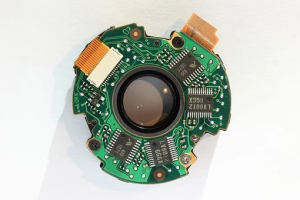SMT assembly experts across the world face a common challenge – the miniaturization trend. As components get smaller, soldering professionals find it harder to accurately print solder paste and comply with both components. However, it’s not like every PCB component has become super-small at the same time. Large components that need larger volumes of solder paste for adequate solder fillets post-reflow processes are still being widely used. Hence, soldering professionals who use the same stencils to print paste for both large and small components face a dilemma.
Table of Contents
The Miniaturization Trend and The Challenges It Poses
Many forecasters expect the global surface mount (SMT) technology market to reach a valuation of $4 billion by the end of 2022. This upward growth trajectory of the global surface mount (SMT) technology market is synonymous with the never-ending push for smaller components. Will the miniaturization trend ever come to an end? Probably not. If so, then how can soldering professionals deal with such minute components?
Phrases like – “impossible,” “no way they’re getting smaller,” and “it’s impossible to handle such small components” are commonly echoed in most PCB assembly facilities every time there’s a new set of super-small components launched into the market. However, these concerns have been persistent ever since lead-free manufacturing was made mandatory.
The self-aligning effects of components have also diminished during this period. In the past, small spreads in placement results weren’t too major issues as they would correct themselves during the curing process. However, with each generation of smaller components, the tolerance levels for small spreads in placement results have diminished as well making accurate placement a must for every soldering professional working with surface mount technology.
Given that surface mount technology cuts production costs by 30% to 50%, it’s silly to believe that SMT will be dumped by manufacturers. Instead, the burden of adoption will fall on soldering professionals who will have to maintain high levels of accuracy when working with SMT stencils and solder paste. Here are some common mistakes soldering professionals must know and avoid –
Electrical Bridging
Electrical bridging is when two conductors that aren’t meant to be electrically connected are soldered. Such soldering errors are the most common reasons for circuit malfunction and electrical shorts. Electrical bridges typically form because of excess solder. These issues of excess solder typically stem from improper solder paste printing processes. The stencil/print arrangement may be wrong, which leads to excessive deposition of solder paste. Too big SMT stencil apertures can also lead to excessive deposition of solder paste. Some other reasons include –
- Solder paste becoming too cold at the wrong time to prompt incorrect bridging.
- High-temperatures or moisture in the assembly facility can cause the solder paste metal to flux ratio to be imbalanced, causing solder paste slumps.
- The nature of the reflow process may worsen electrical bridging issues.
- Applying excessive pressure during component placement can squash paste out of pads and indirectly cause electrical bridging.
How to Fix these Issues
- Soldering professionals must ensure that the solder paste doesn’t slump at any point of the application process. Maintaining an accurate ratio of solder paste metal to flux weight is also highly important.
- The reflow process also needs to be perfect.
- Most importantly, soldering professionals must pay great attention to how they align their stencil openings to the boards and pads. Using automatic printer alignment machines is the safest option. However, operators using frameless SMT stencils must ensure their manual alignment is perfect.
- The amount of pressure being applied while placing the components needs to be perfect.
If there’s too much solder paste being released from the stencil apertures, reducing the dimensions of the apertures by 5-10% can help. Another way of solving excess solder paste deposits is using a thinner SMT stencil. To permanently avoid such stencil-related issues, operators and professionals must get PCB stencil from high-quality manufacturers.
Insufficient Fills and Solder
In these issues, the amount of solder paste deposited on the printer station is lesser than anticipated. The stencil’s apertures don’t deposit as much paste as expected, which leads to many problems in the long run. Key causes of these issues are –
- The solder paste’s viscosity or metal content may be insufficient.
- Stencil apertures getting blocked with desiccated paste.
- Applying too much pressure on the squeegee blades during print cycles can cause some paste to be scooped from larger pads, resulting in insufficient fills.
- The squeegee blades are applied way too fast, causing the paste not to roll properly inside the apertures.
How to Fix these Issues
- Make sure the squeegee blade speed is not too fast and controlled.
- SMT stencils need to be cleaned regularly. Any paste residue must be removed from the apertures.
- The paste’s viscosity and dryness must be checked regularly.
- The printing process should be executed only when there’s sufficient board support.
Knowing about such common stencil-related issues can help soldering professionals avoid similar mistakes!
